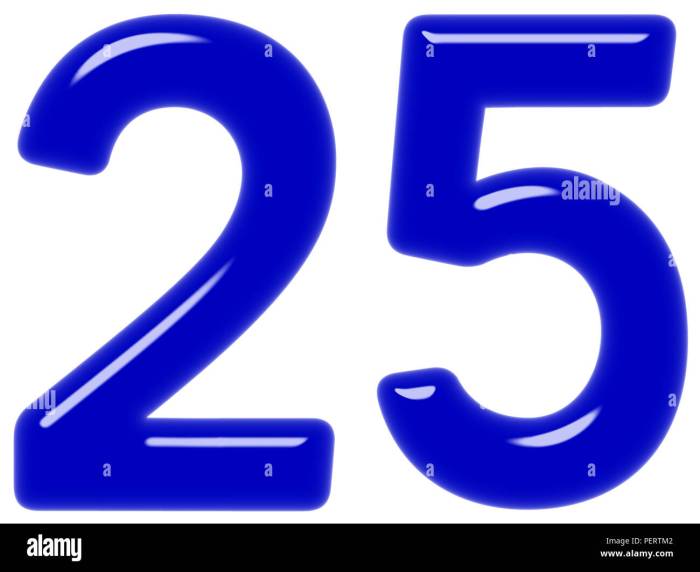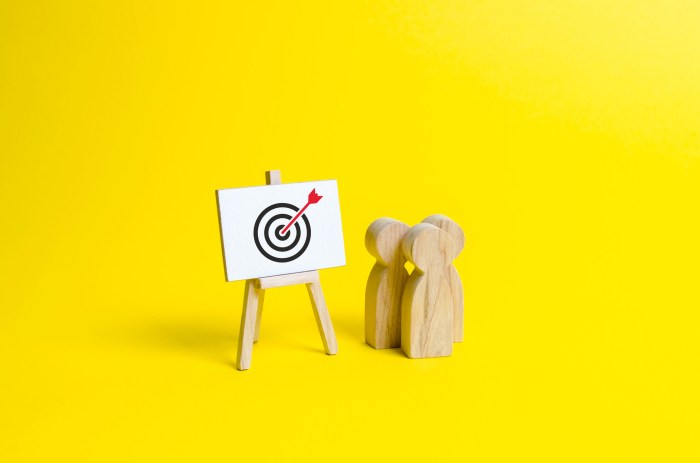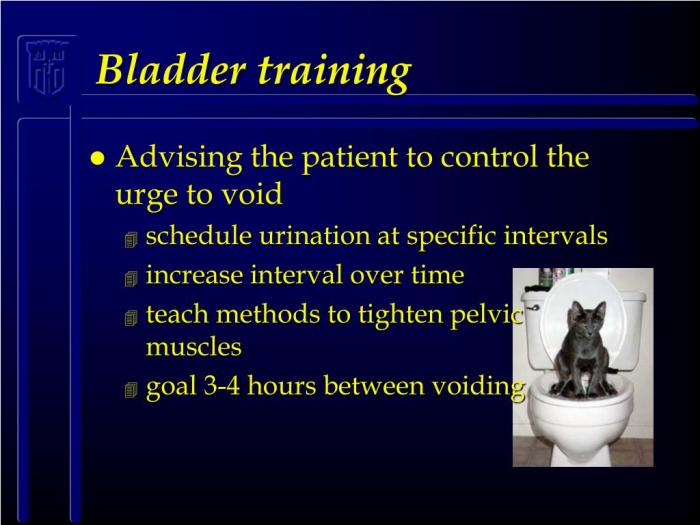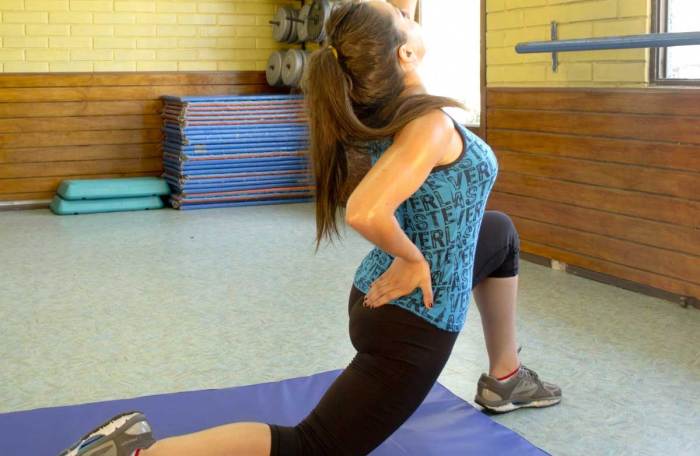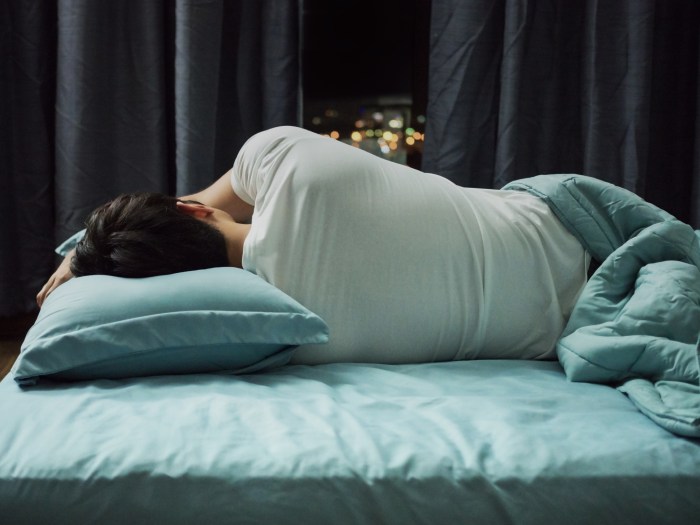Complete bladder training guide for urinary incontinence: This comprehensive guide provides a roadmap for reclaiming control over your bladder health. We’ll explore the science behind urinary incontinence, offering practical techniques and strategies to manage and overcome this common condition. Get ready to embark on a journey toward improved bladder function and a better quality of life.
From understanding the intricacies of your bladder and pelvic floor to developing a personalized training plan, this guide covers everything you need to know. We’ll delve into effective techniques for strengthening pelvic floor muscles, managing different types of incontinence, and adapting your lifestyle for optimal results. It’s time to take control of your bladder and live more comfortably.
Introduction to Bladder Training

Urinary incontinence is a common condition affecting millions worldwide, characterized by the inability to control the release of urine. It can significantly impact a person’s quality of life, causing embarrassment, social isolation, and a fear of accidents. This condition manifests in various forms, impacting individuals of all ages and backgrounds. Understanding the different types of incontinence is crucial for developing an effective bladder training program.Bladder training is a non-invasive, self-managed approach to regaining bladder control.
It involves a series of techniques and strategies designed to strengthen the pelvic floor muscles and improve bladder function. The goal of bladder training is to restore normal bladder habits and minimize or eliminate urinary accidents. It focuses on retraining the body’s natural bladder signals and responses to establish a regular and predictable voiding pattern. This personalized approach is vital for successful outcomes.
Types of Urinary Incontinence
Urinary incontinence can be categorized into several types, each with its own set of symptoms and underlying causes. Understanding the different types is essential for creating a personalized bladder training program.
| Type of Incontinence | Description | Common Symptoms |
|---|---|---|
| Stress Incontinence | Occurs when pressure on the bladder is increased, such as during coughing, sneezing, or exercise, causing leakage. | Leakage of small amounts of urine during physical activity, laughing, or other activities that increase abdominal pressure. |
| Urge Incontinence | Characterized by a sudden, strong urge to urinate followed by an inability to reach the toilet in time, resulting in leakage. | Sudden and intense urge to urinate, often followed by leakage before reaching the bathroom. |
| Overflow Incontinence | Results from the bladder not emptying completely, causing a constant dribbling of urine. | Frequent leakage of small amounts of urine, a feeling of fullness in the bladder, and difficulty emptying the bladder completely. |
| Mixed Incontinence | A combination of two or more types of incontinence. | Symptoms can vary, including a mix of stress, urge, and/or overflow incontinence symptoms. |
General Principles of Bladder Training
Bladder training is based on the principle of gradually increasing the intervals between urination. This approach aims to strengthen the bladder’s capacity and improve its ability to hold urine. A personalized approach is critical, taking into account individual needs, physical conditions, and lifestyle factors. It involves establishing a regular toileting schedule, gradually increasing the time between bathroom visits, and practicing pelvic floor exercises to strengthen the muscles that support the bladder.
Importance of a Personalized Approach
A personalized bladder training program considers individual needs and circumstances. Each person’s experience with urinary incontinence is unique, influenced by factors like age, underlying health conditions, and lifestyle choices. An individualized approach ensures the program is tailored to meet specific needs, maximizing its effectiveness. For example, an elderly person with arthritis might benefit from different strategies compared to a young athlete.
Dealing with urinary incontinence can be tough, but a complete bladder training guide can help! It’s all about retraining your bladder to hold urine for longer periods, and it’s definitely a worthwhile investment of time and effort. Speaking of worthwhile investments, did you know that summer is packed with amazing things to do? Check out the 40 best things summer for some inspiration.
Ultimately, a consistent bladder training routine, along with a healthy lifestyle, will empower you to reclaim control over your bladder function.
Understanding these variations is crucial for developing a successful program.
Benefits of Bladder Training, Complete bladder training guide for urinary incontinence
Bladder training offers numerous benefits, improving both physical and psychological well-being. It helps restore bladder control, reduce urinary accidents, and enhance quality of life. Improved social interactions and a greater sense of independence are common outcomes. For instance, individuals with stress incontinence can return to activities they had previously avoided due to fear of accidents. Furthermore, bladder training reduces the risk of complications associated with long-term incontinence.
Understanding the Bladder and Pelvic Floor: Complete Bladder Training Guide For Urinary Incontinence
Learning about the bladder and pelvic floor is crucial for successful bladder training. Understanding how these structures work together, and any potential issues that may arise, allows for a more effective and personalized approach to managing urinary incontinence. This section will delve into the anatomy, function, and interrelationships of these systems, as well as common factors affecting bladder control.The bladder, a hollow, muscular organ, stores urine produced by the kidneys.
Its function is regulated by complex interactions between the nervous system and muscles, enabling the controlled release of urine through the urethra. The pelvic floor muscles, situated deep within the pelvis, form a crucial support system for the bladder and urethra, playing a critical role in maintaining continence. Understanding their individual and combined function is essential for effective bladder training.
Anatomy of the Bladder and its Function
The bladder is a flexible, balloon-like organ located in the pelvis, behind the pubic bone. Its walls are composed of smooth muscle tissue that stretches and contracts to accommodate varying amounts of urine. The bladder’s lining is specialized to prevent the leakage of urine into surrounding tissues. The process of urination involves signals from the brain that initiate muscle contractions within the bladder wall, forcing urine through the urethra and out of the body.
Role of the Pelvic Floor Muscles in Urinary Control
The pelvic floor muscles, a complex network of muscles and ligaments, are crucial for urinary continence. They form a hammock-like structure that supports the pelvic organs, including the bladder, urethra, and rectum. These muscles, through coordinated contractions and relaxations, control the flow of urine through the urethra, preventing leakage. Weakness or dysfunction in these muscles can contribute to urinary incontinence.
Relationship Between the Bladder, Pelvic Floor, and Nervous System
The nervous system plays a critical role in the coordinated function of the bladder and pelvic floor. Signals from the brain control the contraction and relaxation of bladder muscles, as well as the activation of pelvic floor muscles. These signals are essential for both storage and voiding of urine. Damage or dysfunction in the nervous system, such as that seen in neurological conditions, can impact the ability to regulate bladder function.
Mastering bladder training for urinary incontinence takes dedication and the right strategies. It’s a journey of learning and patience, similar to how practicing a new skill can improve cognitive function. In fact, engaging with brain-boosting activities like level up your brain power with sudoku can indirectly support your bladder training by strengthening mental focus and overall well-being.
Ultimately, a comprehensive bladder training guide is key to reclaiming control and comfort.
For example, multiple sclerosis can disrupt the signals that control bladder emptying, leading to problems with urinary incontinence.
Common Causes of Bladder Dysfunction Affecting Training Success
Several factors can hinder bladder training efforts. These include underlying medical conditions, such as diabetes or neurological disorders, and certain medications. Changes in fluid intake and diet can also affect bladder function. For instance, individuals with overactive bladders may experience frequent urges to urinate, which can make consistent bladder training challenging. Furthermore, psychological factors, such as anxiety or stress, can contribute to bladder dysfunction.
Comparison of Pelvic Floor Muscles and Incontinence
| Muscle Group | Function | Relevance to Incontinence |
|---|---|---|
| Pubococcygeus (PC) | Supports the bladder, urethra, and rectum. Plays a major role in urinary and fecal continence. | Weakness in this muscle is a common factor in stress incontinence. |
| Levator Ani | Forms the base of the pelvic floor. Assists in maintaining continence. | Weakness can lead to urinary leakage, especially during physical activity. |
| Coccygeus | Contributes to the support of the pelvic floor and stability of the rectum. | Its role in continence is somewhat less pronounced than the PC and levator ani. |
This table illustrates the crucial role of different pelvic floor muscles in maintaining urinary control. Weakness or dysfunction in any of these muscle groups can compromise continence, highlighting the importance of targeted exercises and rehabilitation.
Developing a Personalized Training Plan
A personalized bladder training plan is crucial for managing urinary incontinence effectively. It addresses individual needs and preferences, making the process more manageable and successful. This tailored approach allows for gradual progress and accommodates various lifestyle factors, medical conditions, and fluid intake patterns. Understanding the nuances of your personal situation is key to creating a plan that works for you.
Importance of Medical Evaluation
Before embarking on any bladder training program, a medical evaluation is essential. A healthcare professional can identify underlying medical conditions contributing to incontinence, rule out any potential complications, and provide tailored advice. This evaluation might involve a physical examination, urinalysis, or other diagnostic tests to determine the root cause of the incontinence. Early identification of underlying issues is critical for appropriate treatment and to ensure the training plan is safe and effective.
Steps in Creating a Personalized Training Schedule
Creating a personalized training schedule involves several key steps. Firstly, detailed discussion with your healthcare provider is crucial to determine your individual needs and establish realistic goals. Secondly, identifying triggers, such as specific foods, beverages, or activities, is essential to tailor the schedule to minimize those triggers. Thirdly, establishing a baseline urination pattern provides a benchmark for tracking progress.
Fourthly, gradually increasing the time between bathroom visits, starting with small increments, is a crucial part of the training process. Finally, integrating lifestyle modifications that support bladder health, such as regular exercise, is important.
Role of Fluid Intake Management
Fluid intake plays a significant role in bladder training. Adequate hydration is crucial for overall health, but excessive fluid intake can exacerbate incontinence. Conversely, insufficient fluid intake can lead to concentrated urine, potentially irritating the bladder. A balanced approach to fluid intake, adjusted throughout the day, can be crucial. A healthcare professional can provide specific guidance on the appropriate amount of fluid to consume daily, based on individual needs and medical conditions.
Consider consulting a dietician or nutritionist for a balanced hydration plan.
Factors to Consider When Adjusting the Training Plan
Adjustments to the training plan are essential to accommodate various factors. Lifestyle changes, such as travel or social engagements, can impact bladder function. Existing medical conditions, such as diabetes or neurological disorders, may require modifications to the training schedule. Individual responses to the training program vary. For instance, some individuals may respond better to a gradual increase in the time between bathroom visits, while others may find that more frequent, shorter intervals are more effective.
Regular communication with a healthcare professional is critical to adjust the plan as needed.
So, you’re tackling a complete bladder training guide for urinary incontinence? It’s a tough journey, but totally doable. Thinking about how to effectively market your guide online? Learning tips for running online business could be incredibly helpful. It’s all about consistency and a strategic approach, just like the bladder training itself.
Ultimately, a well-structured guide with solid marketing will help you succeed in both endeavors.
Sample Weekly Bladder Training Schedule
| Day | Time | Activity | Fluid Intake | Notes |
|---|---|---|---|---|
| Monday | 8:00 AM | Wake up, void | 1 glass of water | Baseline voiding |
| Monday | 9:00 AM | Bladder training exercise | 1 cup of herbal tea | Hold for 30 minutes |
| Monday | 10:00 AM | Void | 1.5 cups of water | Record time and volume |
| Tuesday – Sunday | … | … | … | Continue with similar patterns, gradually increasing hold time by 15 minutes each day, while monitoring fluid intake and adjusting as needed. |
This sample schedule is a starting point. The specific times and activities should be tailored to individual needs and circumstances. It is crucial to consult with a healthcare professional for a personalized schedule that aligns with your individual needs and medical conditions. Record your progress, noting any changes in your bladder function and adjusting the schedule accordingly.
Techniques for Bladder Control
Mastering bladder control involves a multifaceted approach, combining lifestyle adjustments with targeted exercises and techniques. This section delves into practical strategies for strengthening your pelvic floor muscles, managing different types of incontinence, and developing a personalized plan for success. Consistency and patience are key to achieving lasting results.
Strengthening Pelvic Floor Muscles
Effective bladder control hinges on a strong pelvic floor. These muscles support the bladder, urethra, and rectum, and their weakness can contribute to various incontinence issues. Targeted exercises can significantly improve their strength and tone.
- Kegel Exercises: These exercises focus on contracting and relaxing the pelvic floor muscles. Proper technique involves identifying the correct muscles. Imagine you are trying to stop the flow of urine midstream. Squeeze those muscles, hold for a few seconds, and then release. Repeat this process several times, gradually increasing the duration and frequency of contractions.
Consistency is paramount; aim for multiple sets throughout the day. A common mistake is contracting abdominal or buttock muscles instead. Focus solely on the pelvic floor.
- Biofeedback: This technique uses specialized equipment to provide real-time feedback on pelvic floor muscle contractions. Sensors are placed in the area, and the device displays visual or auditory signals indicating muscle activity. This helps individuals identify and strengthen specific muscles, enabling precise control over contractions. This is especially beneficial for individuals who find it challenging to isolate the pelvic floor muscles on their own.
A therapist guides the patient through exercises, adjusting techniques based on real-time feedback.
- Pelvic Floor Physical Therapy: A physical therapist trained in pelvic floor disorders can assess your specific needs and develop a personalized exercise program. They can provide hands-on guidance, address any underlying issues, and offer modifications to your exercises based on your progress. This is particularly useful for individuals with complex incontinence or other underlying conditions.
Managing Urge Incontinence
Urge incontinence, characterized by sudden and strong urges to urinate, often requires strategies to control bladder spasms and train the bladder to hold urine for longer intervals.
- Timed Voiding: This involves scheduling bathroom visits at regular intervals, even if you don’t feel the urge. Gradually increasing the intervals between voids helps train the bladder to hold urine longer. For instance, if you normally go every two hours, you might try going every three hours for a few days, then every four hours, and so on.
This consistency helps establish a regular bladder emptying pattern.
- Bladder Diaries: Tracking your urination patterns, including the amount of urine, time of day, and any triggers, can help identify patterns and triggers for your urge incontinence. This data helps in identifying patterns, like if the urge is related to certain foods or activities, allowing for targeted interventions.
Managing Stress Incontinence
Stress incontinence occurs when pressure on the bladder is increased, such as during coughing, sneezing, or exercise.
- Pelvic Floor Strengthening: Strengthening pelvic floor muscles is crucial for managing stress incontinence. Consistent Kegel exercises and other pelvic floor strengthening techniques can improve bladder support and reduce leakage during physical exertion.
- Lifestyle Modifications: Avoiding activities that put excessive pressure on the bladder, like heavy lifting, can be a significant part of the strategy. Also, maintaining a healthy weight, as excess weight can put extra pressure on the pelvic floor muscles.
Managing Overflow Incontinence
Overflow incontinence happens when the bladder doesn’t empty completely, leading to frequent dribbling or leakage.
- Regular Toilet Habits: Ensuring regular and timely voiding is crucial. Don’t delay urination, even if you don’t feel a strong urge.
- Medication: In some cases, medications can help stimulate bladder contractions, aiding in complete emptying. A healthcare professional should assess the need for medication.
Comparison of Pelvic Floor Exercises
| Exercise | Description | Illustration | Benefits | Potential Challenges |
|---|---|---|---|---|
| Kegel Exercises | Contracting and releasing pelvic floor muscles | (Imagine squeezing the muscles you use to stop urination midstream) | Strengthens pelvic floor muscles, improves bladder control | Difficulty identifying correct muscles, inconsistent technique |
| Biofeedback | Using equipment to visualize and train pelvic floor muscle contractions | (Imagine sensors placed in the area to provide real-time feedback) | Precise feedback for muscle control, improved accuracy in exercise | Requires specialized equipment, may require professional guidance |
| Pelvic Floor Physical Therapy | Personalized exercises and guidance from a trained professional | (Imagine a therapist providing hands-on guidance and tailored exercises) | Tailored exercises, address underlying issues, accurate technique | Requires scheduling appointments, potentially higher cost |
Lifestyle Modifications and Dietary Considerations
Taking control of your bladder health often involves more than just pelvic floor exercises. Lifestyle factors, including diet and fluid intake, play a significant role in managing urinary incontinence. Understanding how certain substances and habits affect your bladder can empower you to make informed choices that improve your overall well-being.Modifying your lifestyle can significantly reduce the frequency and severity of urinary incontinence episodes.
This involves paying close attention to what you eat and drink, managing stress, and maintaining healthy bowel habits. By addressing these areas, you can support your bladder’s function and improve your quality of life.
Impact of Caffeine, Alcohol, and Certain Foods
Caffeine and alcohol are known bladder irritants. Caffeine acts as a diuretic, increasing urine production and potentially triggering leakage. Alcohol, similarly, can interfere with bladder control and increase the frequency of urination. Certain foods, like spicy foods, acidic foods (tomatoes, citrus fruits), and carbonated drinks, can also irritate the bladder lining, leading to discomfort and increased urgency.
This can exacerbate incontinence symptoms in susceptible individuals.
Strategies for Managing Fluid Intake
Fluid intake is crucial for overall health, but it’s essential to manage it strategically to avoid overhydration or dehydration. Instead of consuming large amounts of fluid at once, aim for consistent, moderate intake throughout the day. Listen to your body’s signals and adjust your intake accordingly. Carrying a water bottle and scheduling regular fluid intake can be helpful for maintaining consistency.
This is particularly important to avoid over-filling the bladder.
Importance of Regular Bowel Habits
Constipation can put pressure on the bladder, potentially leading to urinary leakage or frequency. Establishing regular bowel habits through a balanced diet, sufficient fiber intake, and regular exercise can help prevent these issues. A daily routine for bowel movements, along with avoiding straining during bowel movements, can minimize the risk of bladder problems.
Managing Stress and Anxiety
Stress and anxiety can significantly impact bladder control. Chronic stress can lead to muscle tension in the pelvic floor, potentially hindering bladder function. Stress management techniques, such as deep breathing exercises, yoga, meditation, and mindfulness practices, can help alleviate stress and improve bladder control.
Foods That May Irritate the Bladder and Alternatives
| Food | Potential Irritant Effect | Alternatives |
|---|---|---|
| Spicy Foods (e.g., chili peppers, curry) | Can irritate the bladder lining, increasing urgency and frequency. | Mild spices, herbs, or flavorings |
| Acidic Foods (e.g., tomatoes, citrus fruits, vinegar) | Can cause irritation and inflammation of the bladder lining. | Baked or cooked vegetables, fruit smoothies, or low-acid options |
| Carbonated Drinks | Can cause bladder irritation and increased urine production. | Water, herbal teas, or unsweetened beverages. |
| Chocolate | Some individuals may find chocolate irritating to their bladder. | Other sweet treats, or avoiding chocolate entirely. |
| Alcohol | Interferes with bladder control, increases frequency, and can cause irritation. | Water, or other non-alcoholic beverages. |
| Caffeine | Acts as a diuretic, increasing urine production and potentially triggering leakage. | Decaffeinated coffee or tea, herbal infusions, or water. |
Monitoring Progress and Adjustments
Tracking your progress is crucial for bladder training success. It allows you to identify what works and what doesn’t, enabling adjustments to your plan as needed. Regular monitoring helps you stay motivated and ensures you’re on the right path toward achieving better bladder control.Understanding your body’s response to the training is paramount. By meticulously tracking your urination patterns, you can pinpoint trends and areas where adjustments might be beneficial.
This detailed understanding empowers you to fine-tune your strategy for optimal results.
Monitoring Bladder Function During Training
Careful observation of your bladder function is vital. This involves noting any changes in urination frequency, volume, and urgency. Consistent monitoring helps to determine if your training plan is effective or if modifications are required. It provides a concrete basis for adjustments.
Importance of Tracking Urination Patterns
Tracking urination patterns is essential for evaluating the effectiveness of your bladder training plan. Monitoring the frequency, volume, and urgency of urination provides invaluable insights into your bladder’s response to the training. Understanding these patterns helps you pinpoint areas where your current approach may need improvement. This is a crucial aspect of successful bladder training.
- Frequency: How many times you urinate in a 24-hour period. Note any significant variations from your baseline frequency. A decrease in frequency could indicate a positive response to training. Conversely, an increase could signal the need to adjust your fluid intake or training techniques.
- Volume: The amount of urine passed during each urination. Regular tracking allows you to see if the volume is consistent or if there are noticeable fluctuations. A pattern of smaller volumes might suggest your bladder is holding more urine effectively.
- Urgency: The feeling of needing to urinate suddenly and urgently. Tracking urgency levels allows you to assess if your training plan is alleviating or exacerbating these feelings. If urgency increases, it could signal a need to adjust your fluid intake or incorporate relaxation techniques.
Adapting the Training Plan Based on Progress
Adjustments to your bladder training plan are essential for optimal results. Based on the patterns you observe in your urination data, you can modify aspects of your plan, such as fluid intake, scheduled bathroom visits, or relaxation techniques.
- Fluid Intake: If your frequency is decreasing, you might consider adjusting your fluid intake. Conversely, if your frequency is increasing, you may need to slightly increase your fluid intake.
- Scheduled Bathroom Visits: If you notice a reduction in urgency and frequency during certain times of the day, you can adjust the timing of your bathroom visits.
- Relaxation Techniques: If urgency remains a problem, incorporate relaxation exercises or other techniques that can help with stress reduction.
Seeking Medical Advice When Necessary
If you notice no improvement or if your symptoms worsen, it is crucial to consult with your doctor. A medical professional can evaluate your condition and determine if any underlying medical issues might be contributing to your urinary incontinence.
Sample Forms for Tracking Urination Patterns
| Date | Time of Urination | Volume (mL) | Urgency (0-10 scale) | Frequency | Comments |
|---|---|---|---|---|---|
| 2024-10-27 | 7:00 AM | 250 | 2 | 1 | Felt normal |
| 2024-10-27 | 10:00 AM | 300 | 5 | 1 | Slight urgency |
| 2024-10-27 | 1:00 PM | 200 | 1 | 1 | No urgency |
This is a sample table; you can adapt it to your needs. You can add columns for specific exercises or medications you take.
Addressing Potential Challenges and Complications
Bladder training, while effective for many, can present hurdles. Understanding potential roadblocks and developing strategies to navigate them is crucial for successful management of urinary incontinence. This section delves into common challenges, ways to overcome them, and recognizing when professional help is needed.Addressing these obstacles head-on empowers you to maintain your progress and build a healthier relationship with your bladder.
Common Challenges in Bladder Training
The path to improved bladder control isn’t always smooth. Common challenges include:
- Frustration and Discouragement: Achieving consistent results can take time and effort. Feeling discouraged or frustrated is common, particularly during the initial stages. It’s important to remember that progress, even small steps, is progress.
- Urgency and Frequency: Sometimes, bladder training can temporarily increase urgency and frequency. This is often a result of the body adjusting to new routines. Maintaining a consistent schedule, and the techniques described in previous sections, can help mitigate these issues.
- Lack of Time or Motivation: Busy schedules and lifestyle factors can impact the ability to adhere to a bladder training plan. Creating a plan that integrates seamlessly into daily life, and finding motivation through the positive effects of improved control, can overcome this obstacle.
- Physical Limitations: Individuals with physical impairments may face specific challenges during bladder training. Modifications to the plan, possibly involving assistive devices or adjustments to the schedule, may be required. Always consult with a healthcare professional for personalized recommendations.
- Dietary Triggers: Certain foods and beverages can exacerbate urinary urgency and frequency. Identifying personal dietary triggers and modifying intake accordingly can minimize these issues.
Strategies for Overcoming Challenges
Developing strategies to address the challenges is paramount for maintaining progress. Addressing frustration, for example, requires focusing on small victories and celebrating milestones. Adapting the plan to accommodate schedule changes and physical limitations is essential for maintaining commitment. Maintaining a supportive environment and connecting with others facing similar challenges can significantly boost morale and motivation.
- Positive Self-Talk: Focus on the progress you’re making, no matter how small. Acknowledging efforts and celebrating achievements, even incremental ones, can significantly impact your mindset.
- Gradual Adjustments: Don’t try to change everything at once. Make adjustments to your schedule and routine gradually. A sudden shift can be overwhelming and lead to setbacks.
- Support Systems: Surrounding yourself with a supportive network, whether it’s family, friends, or support groups, is invaluable. Sharing experiences and seeking encouragement from others who understand the journey can be a powerful motivator.
- Professional Guidance: Consult with a healthcare professional or a physical therapist for personalized strategies. They can tailor a plan to your specific needs and address any underlying health conditions.
Recognizing Signs of Complications or Worsening Incontinence
Careful monitoring of symptoms is crucial. Be alert for:
- Increased Frequency and Urgency: If frequency or urgency increases significantly beyond what was initially experienced or after making adjustments to the plan, it may signal a problem. This could indicate a need to adjust the plan or seek medical attention.
- Sudden Changes in Urine Output: A noticeable change in the amount of urine produced or changes in the appearance of the urine can be a sign of a developing condition.
- Pain or Discomfort: Pain or discomfort during urination or in the pelvic area requires immediate medical evaluation.
- Fever or Chills: These symptoms can accompany urinary tract infections or other health issues and should be investigated immediately.
When to Seek Medical Attention
Don’t hesitate to seek medical attention if you experience any of the following:
- Sudden, severe worsening of incontinence: This warrants immediate medical evaluation.
- Blood in the urine: This is a serious sign requiring prompt medical attention.
- Persistent pain or discomfort: Do not ignore persistent pain or discomfort.
- Unexplained fever or chills: These symptoms could indicate a urinary tract infection or another underlying issue.
Importance of Support Systems
A strong support system is essential throughout the bladder training journey. This could include family, friends, or support groups. Sharing experiences with others who understand the challenges can be incredibly motivating and helpful.
Long-Term Maintenance and Support
Bladder training isn’t a one-and-done project; it’s a journey. Sustaining progress requires commitment and a plan for long-term maintenance. This section focuses on how to integrate bladder training into your daily life, ensuring ongoing support, and maintaining motivation throughout the process. This will help you achieve lasting results and improve your quality of life.Long-term success hinges on consistency and understanding how to adapt your training to fit your changing needs and lifestyle.
Regular check-ins with healthcare professionals, and establishing a supportive network, are crucial for continued progress.
Integrating Bladder Training into Daily Routines
Successfully integrating bladder training into daily life is key to long-term success. This requires planning and adjusting habits. Schedule regular bathroom breaks, ensuring they align with your body’s natural signals. Consistency is critical. Create a schedule that works for your daily routine, avoiding rushing and allowing for planned bathroom breaks.
The Role of Ongoing Medical Monitoring and Support
Regular check-ups with your doctor are essential. They can assess your progress, adjust your training plan as needed, and address any new concerns. Discuss any changes in your symptoms or the effectiveness of your current regimen. Your doctor can identify any underlying issues and tailor your plan to your specific needs. This allows for adjustments in the training program to optimize outcomes.
Suggestions for Continuing Support and Motivation
Maintaining motivation is crucial. Find a support system, whether it’s a friend, family member, or support group. Sharing experiences and strategies with others can be immensely helpful. Celebrate your successes, no matter how small. Tracking your progress, noting improvements, and acknowledging setbacks, helps you stay focused and motivated.
Consider keeping a journal to record your experiences, and note how your training plan is affecting your symptoms.
Resources for Long-Term Support
- Support Groups: Connecting with others facing similar challenges can provide invaluable emotional support and practical advice. Many online and local support groups exist for people with urinary incontinence. These groups offer opportunities to share experiences, ask questions, and learn from others’ successes.
- Websites: Numerous websites offer information, resources, and support for managing urinary incontinence. Look for reputable sources from healthcare organizations or patient advocacy groups for accurate and up-to-date information. Websites can offer additional exercises, advice, and tools to support your training.
- Healthcare Professionals: Maintaining regular contact with your healthcare provider is crucial. They can provide ongoing guidance and support tailored to your specific needs, including dietary recommendations and medical management.
Epilogue
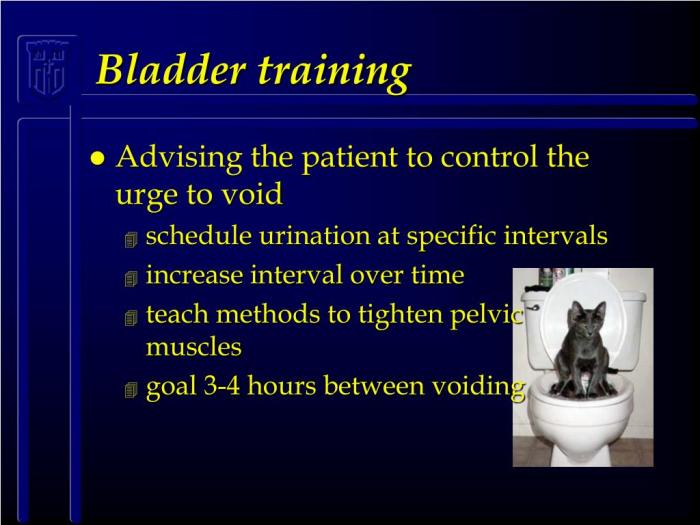
In conclusion, this complete bladder training guide for urinary incontinence provides a practical and personalized approach to regaining bladder control. By understanding your body, creating a tailored plan, and making necessary lifestyle adjustments, you can effectively manage your incontinence and improve your overall well-being. Remember, consistency and perseverance are key. This guide equips you with the tools and knowledge to embark on this journey with confidence.
